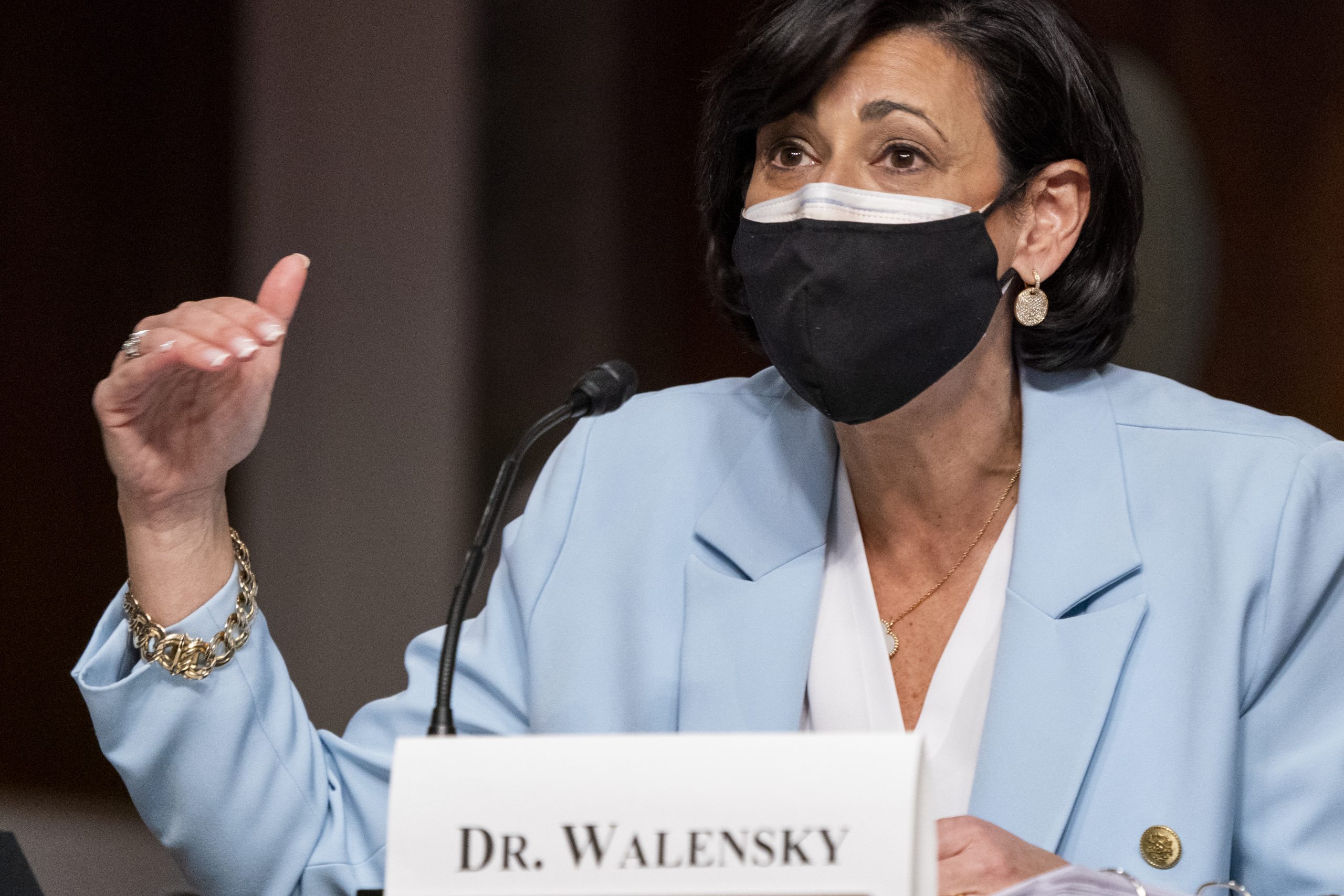The Centers for Disease Control and Prevention is standing by its mask guidance, despite more and more states easing recommendations as the wave of omicron cases continues to recede.
The CDC's current mask guidance says that people who are up to date on their vaccinations (i.e., vaccinated and boosted if eligible) should wear a mask in indoor public settings in any area that has substantial or high transmission. The agency defines substantial transmission as having between 50 to 99.99 new cases per 100,000 people in the past seven days. High transmission is having 100 or more new cases per 100,000 people in the past seven days.
Currently, 99.1 percent of counties in the entire country have high transmission. Thus, per CDC guidance, nearly the entire country should continue to recommend masking indoors.
But states are dropping that recommendation amid falling cases and declining patience for the pandemic. Officials in California, Connecticut, Delaware, New Jersey, and Oregon have all announced plans to drop masking recently. On Wednesday, officials in Massachusetts, New York, and Illinois joined them.
"Numbers are coming down, and it is time to adapt," New York Gov. Kathy Hochul said Wednesday, according to The New York Times.
Are we there yet?
But the pandemic is not yet done with us. Nationally, the seven-day rolling average of daily cases is around 240,000, which is around the same level as the peak of the massive wave in January 2021 and much higher than the peak of the delta wave last fall. Hospitalizations are also still quite high, with a seven-day average of daily hospitalizations at over 111,000. And deaths are averaging around 2,500 per day, which is higher than they've been in a year. In the past few days, the US has exceeded 900,000 deaths from COVID-19.
Still, the decline in cases is raising hopes. Many experts expect that, as cases come down further, the country will be left with a vast amount of immunity from prior infection as well as vaccination. That could lessen the chances for big surges and disruptions in the future.
In an interview with the Financial Times published Tuesday, top infectious disease expert Anthony Fauci said the country is "certainly heading out of" the "full-blown pandemic phase of COVID-19."
"There is no way we are going to eradicate this virus," Dr. Fauci said. "But I hope we are looking at a time when we have enough people vaccinated and enough people with protection from previous infection that the COVID restrictions will soon be a thing of the past.”
Such hopes have spurred a lot of states, like those listed above, to ease or consider easing restrictions. And the CDC is currently working up new guidance for how states and local officials should ease out of the acute pandemic phase.
But, in a White House press briefing Wednesday, CDC director Rochelle Walensky suggested that it's still too early to pull back. "We certainly understand the need and desire to be flexible," Dr. Walensky noted. "And we want to ensure the public health guidance that we're providing meets the moment that we're in." But, for the moment we are in right now, there is no updated guidance, she said.
"We are working on that guidance," she said optimistically. "We are working on following the trends for the moment." But, she cautioned, "our hospitalizations are still high, our death rates are still high. So, as we work toward that [new guidance] and as we are encouraged by the current [case] trends, we are not there yet."


